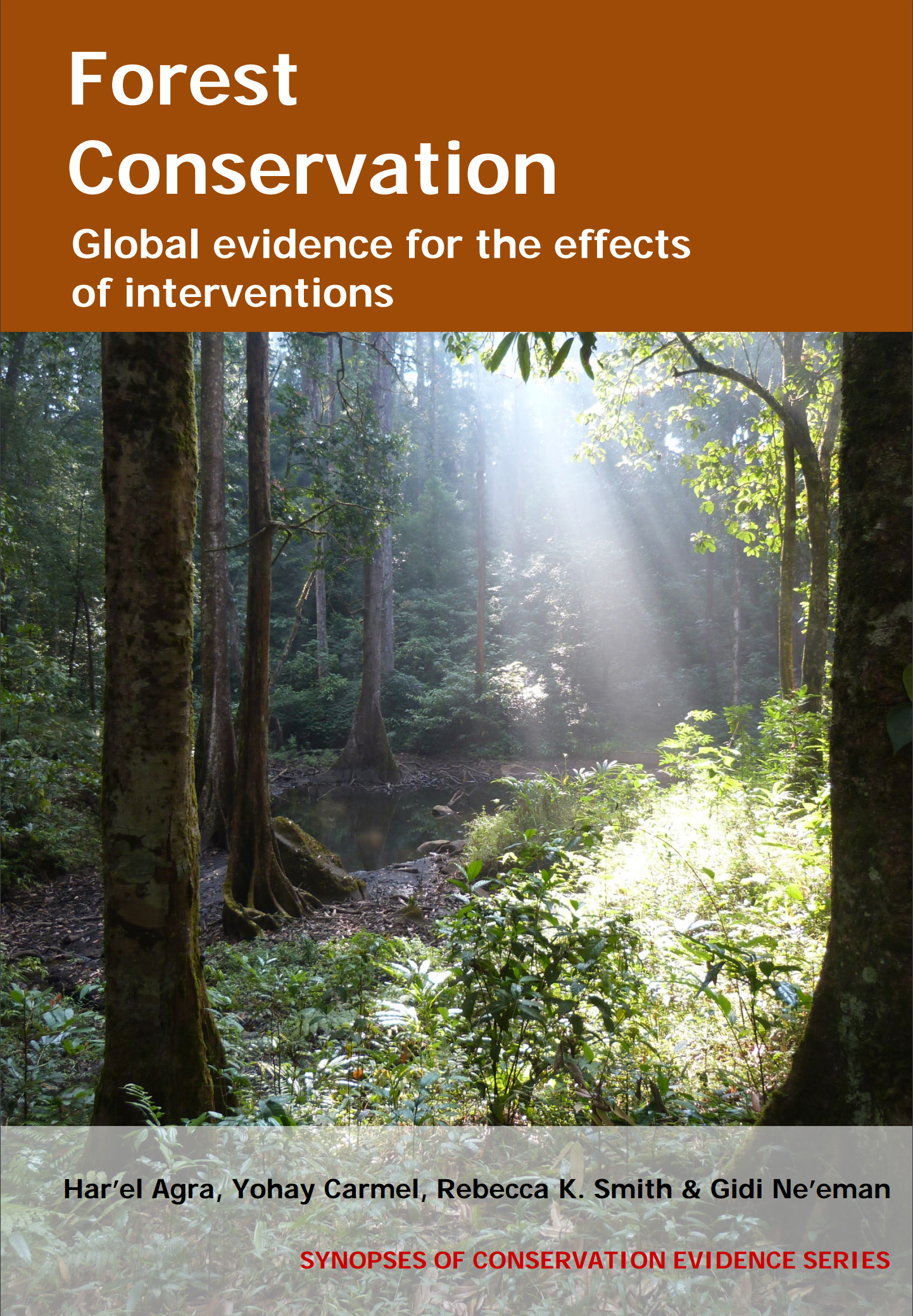Legal protection of forests
-
Overall effectiveness category Unknown effectiveness (limited evidence)
-
Number of studies: 3
View assessment score
Hide assessment score
How is the evidence assessed?
-
Effectiveness
50% -
Certainty
20% -
Harms
0%
Study locations
Supporting evidence from individual studies
A site comparison study in 2005 in temperate broadleaf forest in Iran (Alijanpour & Mahmoudzadeh 2007) found that forest protection increased the density of young trees. Thirty years after an area was protected, the average number of new trees was higher in protected (530/ha) than in unprotected areas (390/ha). New tree density was monitored in 77 plots (0.1 ha) in one protected and one unprotected forest sites (485 ha each).
Study and other actions testedA replicated, paired sites study in 1993-2005 in tropical dry forest in Mexico (Ceccon & Hernández 2009) found no effect of forest protection on seed density or diversity of trees and shrubs. The total number of tree and shrub seeds was similar in protected (422/m2) and in disturbed sites (377/m2), as was the number of species/plot (18 in both) and species diversity (Shannon index disturbed: 1.51; protected: 1.66). Two 10 x 20 m treatment plots were replicated at eight sites: disturbed (intensive cattle grazing, fire wood extraction of >160 ton/year; 0.8 ha) and protected (exclusion of human disturbances since 1993). Viable seeds of trees and shrubs were identified using five seed traps in each treatment plot, which were emptied at monthly intervals in 2004-2005.
Study and other actions testedA site comparison study in tropical moist forest in Nigeria (Adekunle, Olagoke & Ogundare 2010) found that legal protection of forest increased trees species richness and diversity. The number of tree species observed was 46 vs 24, the number of tree families observed was 21 vs 14, and trees diversity (Shannon index) was 3.16 vs 3.04 in a protected forest compared with a logged forest. Trees were sampled in eight 20×20 m plots in one protected forest (constituted as strict nature reserve by the forestry research institute of Nigeria) and one logged forest (where active logging activities are in progress).
Study and other actions tested
Where has this evidence come from?
List of journals searched by synopsis
All the journals searched for all synopses
This Action forms part of the Action Synopsis:
Forest Conservation
Forest Conservation - Published 2016
Forest synopsis





)_2023.JPG)














